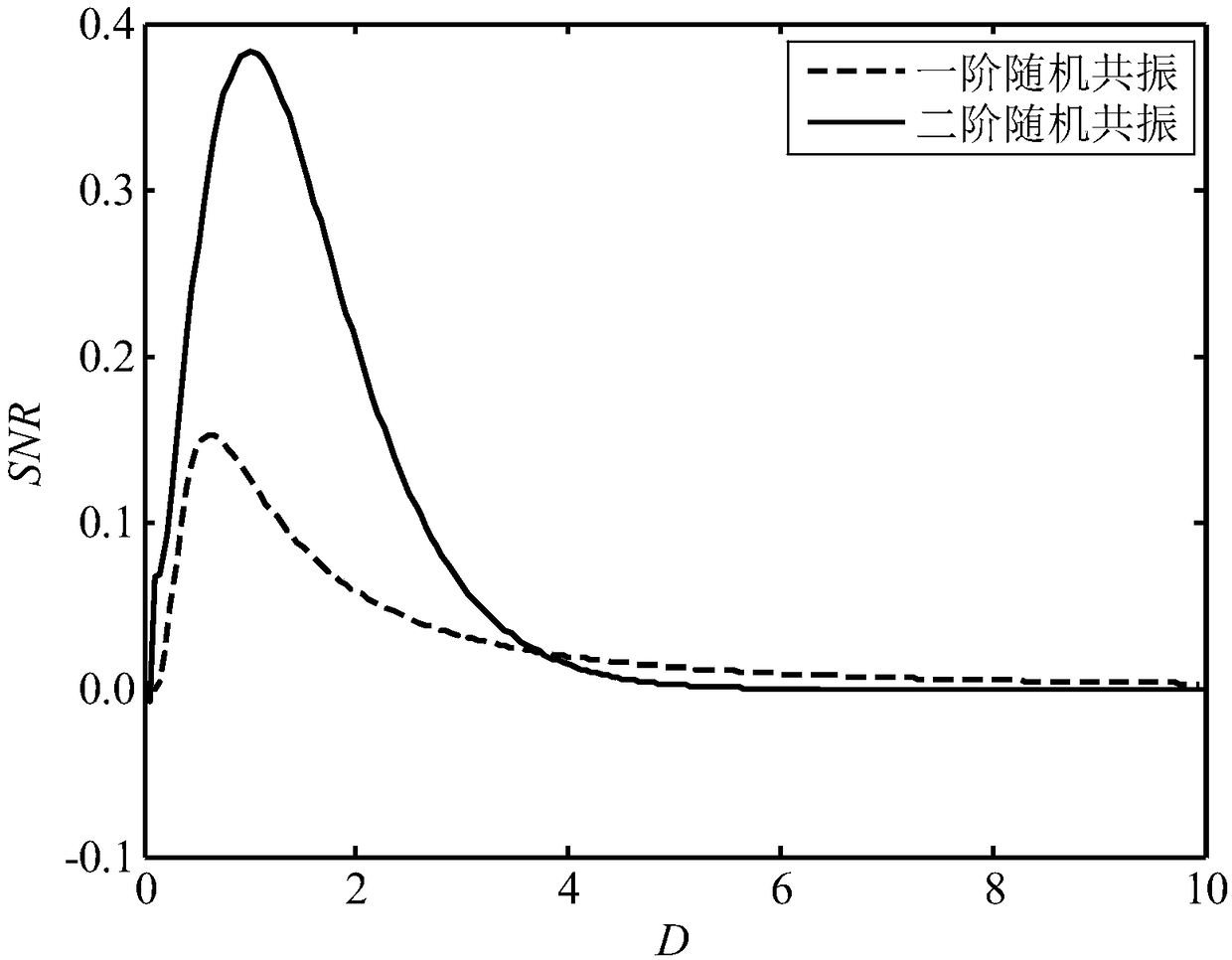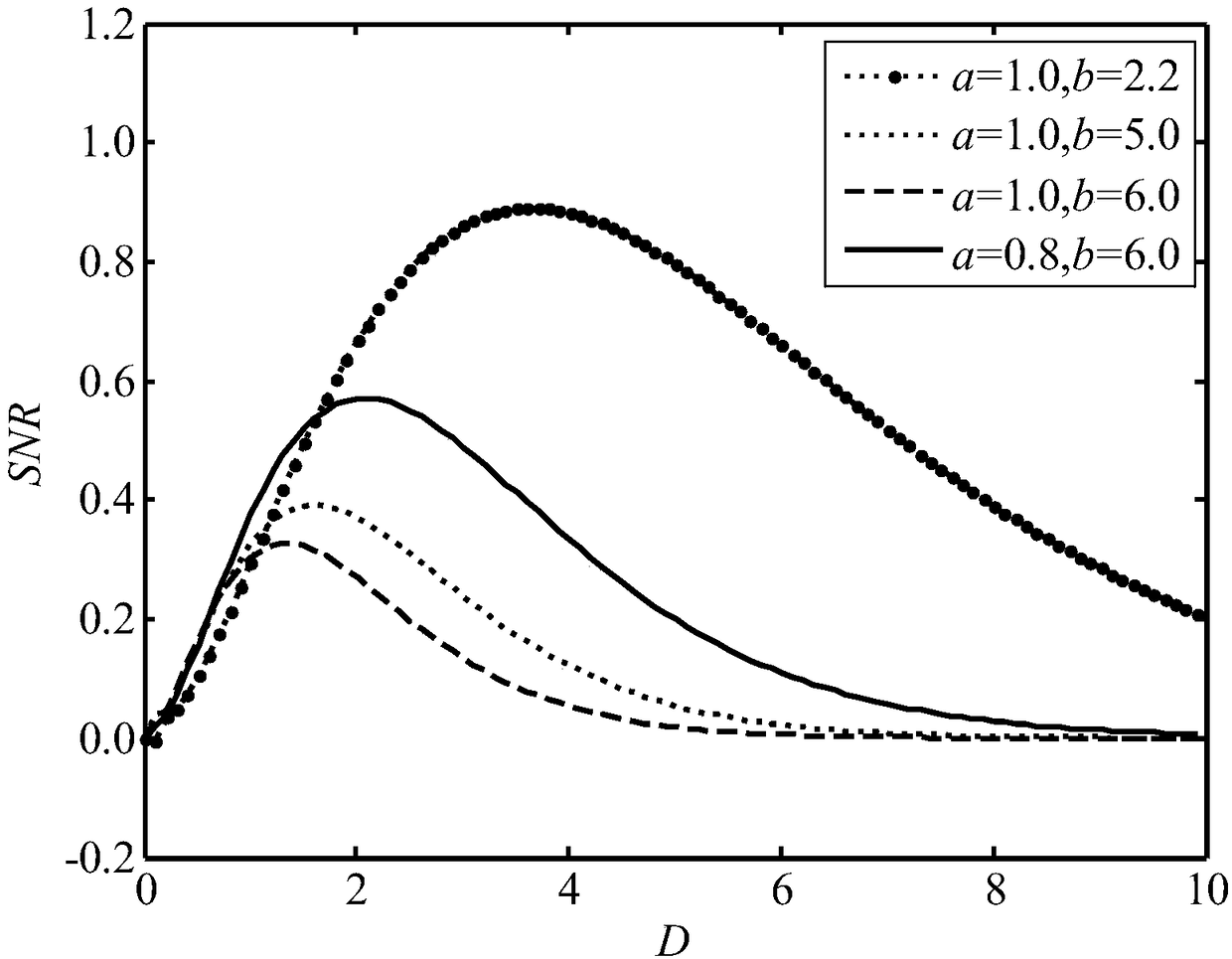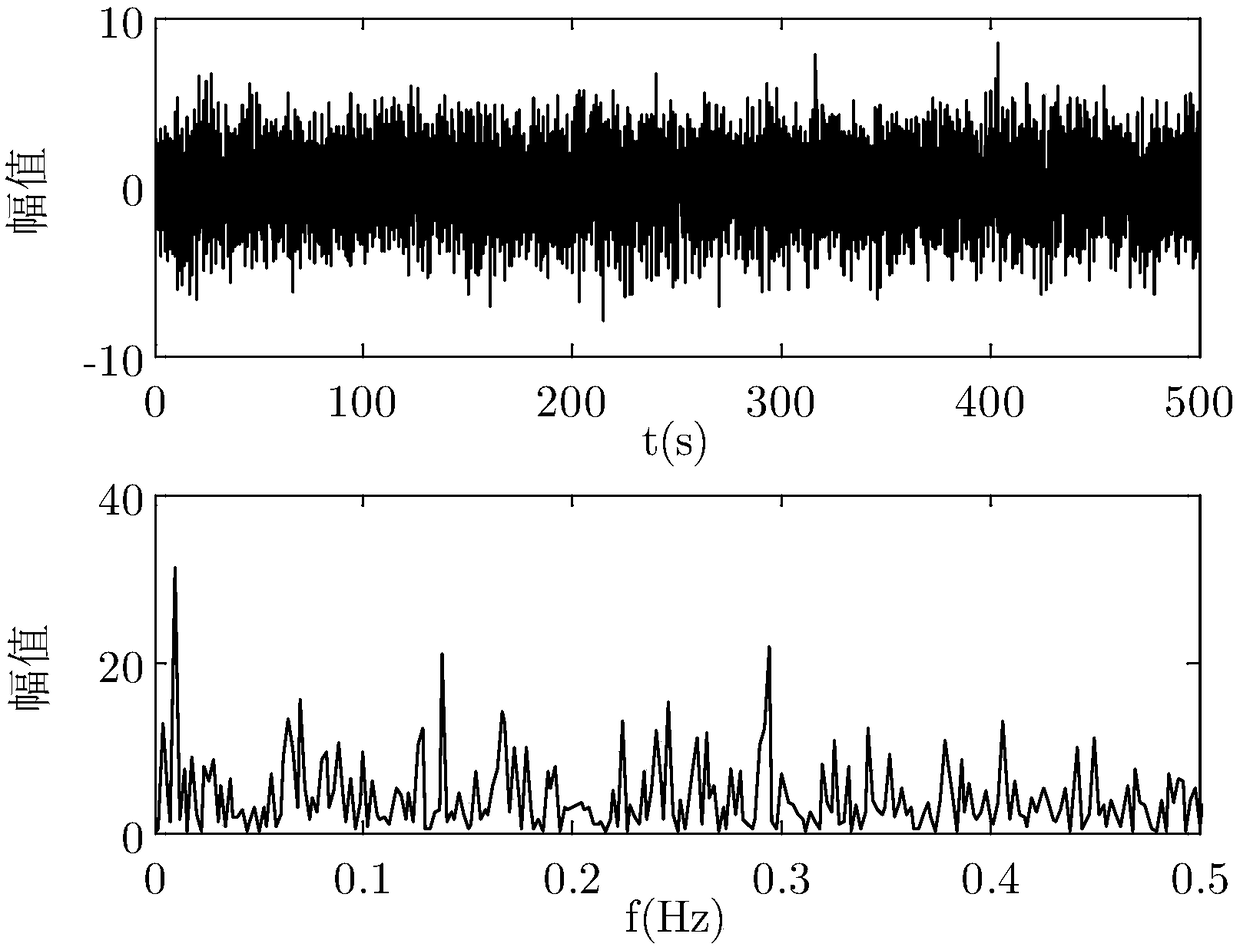Weak signal detection of multi-scale noise-modulated stochastic resonance
A technology containing noisy signals and signals, which is applied in the field of weak signal detection of multi-scale noise-adjusted stochastic resonance, and can solve problems such as inability to perform frequency conversion at the same time, reduced time resolution of output signals, and ineffectiveness.
- Summary
- Abstract
- Description
- Claims
- Application Information
AI Technical Summary
Problems solved by technology
Method used
Image
Examples
Embodiment Construction
[0017] The implementation of the present invention will be further described below in conjunction with the accompanying drawings and specific examples.
[0018] Step 1: The underdamped second-order stochastic resonance model is as follows:
[0019]
[0020] in for the noise, is a periodic signal, r is a damping coefficient, and U(x) is a potential function. Substitute into formula (1) to get:
[0021]
[0022] The following is a theoretical analysis of the output signal-to-noise ratio of the second-order stochastic resonance with small parameters. For simplicity, let r = 0, dx / dt=y, then formula (2) is transformed into:
[0023]
[0024] The output signal-to-noise ratio of the second-order enhanced stochastic resonance is obtained by derivation:
[0025]
[0026] The variation law of the second-order stochastic resonance signal-to-noise ratio with the noise intensity is compared with that of the first-order stochastic resonance. figure 1 Shown: Through th...
PUM
 Login to View More
Login to View More Abstract
Description
Claims
Application Information
 Login to View More
Login to View More - R&D
- Intellectual Property
- Life Sciences
- Materials
- Tech Scout
- Unparalleled Data Quality
- Higher Quality Content
- 60% Fewer Hallucinations
Browse by: Latest US Patents, China's latest patents, Technical Efficacy Thesaurus, Application Domain, Technology Topic, Popular Technical Reports.
© 2025 PatSnap. All rights reserved.Legal|Privacy policy|Modern Slavery Act Transparency Statement|Sitemap|About US| Contact US: help@patsnap.com



